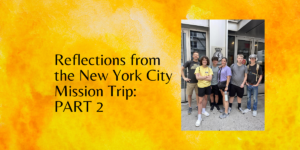by Tom Peacock
The sanctuary of St. John’s underwent a major renovation in the early 1960’s. If you were in church on Sunday, you heard Tom Peacock’s name mentioned. He was a beloved member of the church for many years. Tom was also an extraordinary writer.
Below is his explanation of some of the reasons for the changes needed in the sanctuary:
The Renovation by Tom Peacock
(Many thanks to the Peacock family for granting permission to reprint).
Now it came to pass in the fullness of time, that the people of St. Johns decided to renovate, reclaim, redecorate, and generally spruce up the sanctuary. Time, in this case, reached its fullness in 1963, some forty-one years after the church was built. It’s not that the sanctuary couldn’t have used some help earlier, but like most humans, our congregation had a moderately severe case of procrastination. And in our society, sooner or later if one really seeks, he shall find that procrastination and a perception of a money shortage are bedfellows indeed. Ultimately though, faith, the unlikely third bedfellow, struggles from the enveloping covers of the other two, and says, “Let’s try. It just might work!”
Of course, there were those who had said for some time that something really should be done with the dingy and drab overall appearance of the room. Others were more specific. The dark Victorian woodwork was depressing. Some objected to the exposed bronze dentistry of the organ pipes, arrayed along the back wall of the choir like so much vertical plumbing. A number of parishioners had tired of the dome, an integral part of the structure. The interior of dome was painted what many called, ”Carolina Blue” liberally laced with some fluffy white clouds. The unknown artist stopped just short of a couple of cherubim, but then every right-thinking Baptist knows that would have been idolatrous.
The worn carpet was the object of considerable scorn, and everyone knew it should be replaced, but in this, as with other areas, there was regret. Realizing that the carpet was worn indeed, we knew too that it had succumbed to the footsteps of pilgrims as they came forward, hand outstretched, searching for meaning and a new life; and it had been swept by the trains of the gowns of innumerable radiant young women embarking on one of life’s great adventures. It had been scuffed by the Sunday best shoes of the small fry as they scurried down the aisles to the children’s sermons about a city of birds. There were furrows in the carpet as well, left by the wheels of the rolling biers of the faithful, as they came to this beloved place, savoring for one last time the bittersweet farewell from its fellowship. So, we knew we had to change but were reluctant to part with the memories and did nothing.
Most actions in this world take place because of the presence of a catalyst. St. Johns had two. The first was a tall, talented minister of music named Ken Dooley.
Before talking about Ken, it is necessary to describe just a bit about the pulpit area. The platform was built in a semicircle, with the flat portion nesting against a dark wooden screen, separating it from the organist and the choir. It rose three feet or more above the floor. A short flight of stairs at each end gave access from the main sanctuary floor to the platform. The high mahogany pulpit was in the exact center and was flanked on either side by huge mahogany armchairs. These elevated chairs, looking somewhat like thrones, faced the congregation. Dr. Broach occupied the one on the Fifth Street side of the building during all the preliminaries, and Ken Dooley sat in the other during the sermon.
As it happened, someone had given Ken an assortment of some of the most colorful Argyll socks ever conceived by the wool trade, and certainly never visualized by the sheep. I say they were given to Ken; I don’t know this as fact, but these just weren’t socks that men bought for themselves. There were yellows, greens, reds, and combinations that boggle the mind. So, Sunday after Sunday while Dr. Broach, robed and dignified held forth on the eternal truths, Ken sat, all six feet four of him, swinging his crossed legs at the crowd. While we heard an inspired message from the pulpit, we had only to look to the side to see the splendor of a Hawaiian sunset. Several people spoke to Dr. Broach about this, but he didn’t have the best vantage point and never really appreciated what he was missing. One person did say, however, that he would make a significant contribution to a renovation with the provision that its construction would be such that the lower extremities of the staff would never be visible to mortal man. So, the eventual design was such that all the ministers can now come in Argyll socks, hip boots, or for that matter, barefoot if they like, and the congregation will never know the difference. And several generations of churchgoers don’t really know the debt they owe to one uninhibited choir director.
The second catalyst involved two characters. One was a lovely young organist, Bibba Whisnant, and the other a former professional basketball player, Wake Forest coach, raconteur, and ordained Baptist minister named Horace “Bones” McKinney. We invited Bones to lead a week of special services, and he came. In those days, we called them “Revivals,” and under Bones they were all of that.
Anyone who had ever seen Bones as a coach knew that he was not distinguished by his calm demeanor. Stories abounded about his tearing towels to strips, and on at least one occasion he slid his folding chair across the floor of the arena, hoping to attract the attention of the official. In this he accomplished his goal. In addition to assessing a technical, the referee neglected to return the chair leaving Bones no place to sit for the balance of the game. Legend has it that Bones’ chair for all following home games was equipped with a seat belt.
So, Bones McKinney came to St. Johns and preached a series of mighty sermons. Space was tight, however, and the distance between the back of the pulpit and the screen was a scant eighteen inches. Less than a foot behind the screen was the bench of the organist. As Bones would warm to his task, he would become more and more animated, and when he would whirl or pivot waving his arms like a bespectacled stork his size fifteen shoe would strike the wooden screen with a sound like a bass drum. Bibba could hear him, but she couldn’t see him coming. So, every time the shoe struck the screen and the boom reverberated, Bibba would jump about six inches and cry “WHOOPS!”
The average sermon lasted about twenty-five minutes and Bones kicked the screen at least five times per sermon so the whole service was sort of a succession of ”BOOMS!” and ”WHOOPS!” So far as I could tell, Bones never noticed.
One of the deacons did remark at the next meeting that he thought brother Bones had done a good job, but we really did need to do something about the sanctuary since having it sound like the Cherokees were having a convention out back of the baptistry didn’t add much to the dignity of the service. Dr. Broach was not one to pass an opportunity like this, and we were under way.









